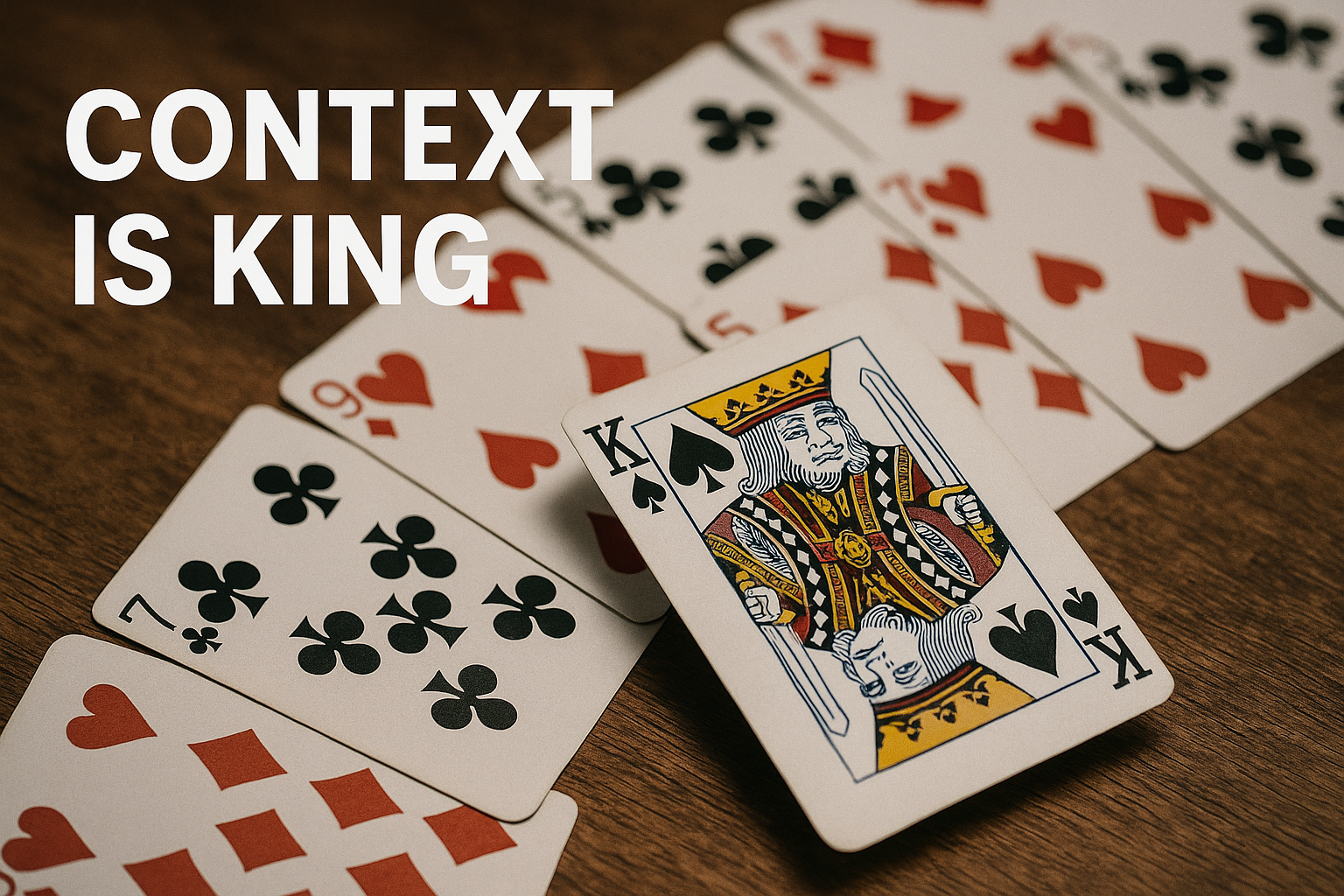Summary Insight:
The CEO’s true job is shifting: in the AI era, they are the Chief Context Officer. Mastering context—shared meaning across humans and AI—is how companies beat the complexity tax and scale with speed.
Key Takeaways:
- Complexity tax slows every growing company; context removes it.
- Technical context engineering enables organizational context engineering.
- AI amplifies context—clarity compounds, chaos multiplies.
Most people think the CEO’s job is to set strategy, inspire the team, and deliver results. True—but incomplete.
In the age of AI, the CEO’s real role is becoming clearer: they are the company’s Chief Context Officer.
Why? Because context—more than strategy, more than capital, more than technology—is the invisible system that drives behavior, decisions, and outcomes. And AI is about to make the CEO’s context-setting power the most important force in business.
Technical Context Engineering Is Only the Start
You’ve probably noticed the explosion of interest in technical context engineering.
This is the discipline of designing and managing the “context windows” that large language models use to generate useful outputs. Getting this right—through embeddings, retrieval, knowledge graphs, memory layers—is why job titles like “Software Engineer” are mutating into “Context Engineer” and “Software Architect” into “Context Architect.”
It’s a sign of the times. But it’s not the end game.
The only reason to master technical context engineering is so you can do something more powerful: organizational context engineering.
Organizational Context Engineering is the End Game
Organizational context engineering is the practice of building a living, shared map of your company—so that every person and every AI knows what’s happening, why it’s happening, and what to do next.
Think of it as the connective tissue that integrates actions, people, processes, goals, decisions, data, and history into one understandable view, delivered where work is actually done.
What it includes:
-
Common language – clear definitions for teams, products, metrics.
-
Relationships – how projects, processes, and owners connect.
-
Time – when things changed, in what order.
-
Decisions – who decided what, why, and expected outcomes.
-
Goals to metrics – line of sight from priorities to KPIs and accountable owners.
-
Guardrails – budgets, risks, and policies that shape choices.
-
Delivery – concise dashboards and briefs inside daily tools, not locked away in portals.
Done well, organizational context creates clarity, speed, and accountability. Done poorly, it multiplies rework, politics, and missed handoffs.
Here’s the quick test:
A new employee—or an AI agent—should be able to answer who/what/why/when/how for any priority in seconds. If they can’t, your context isn’t engineered.
The CEO’s Real Job
Max DePree once wrote, “The first job of a leader is to define reality.”
That always stuck with me. But I’ve come to realize that what he really meant was this: The first job of a leader is to create context.
Context is the invisible fabric that shapes behavior and outcomes. It ties together:
-
Strategy – purpose, goals, direction.
-
Culture – values and unwritten rules.
-
Structure – roles and accountabilities.
-
Processes – recurring flows of work.
-
People – styles, talents, motivations.
-
Incentives – explicit and implicit feedback loops.
-
History & timing – past choices and current dynamics.
When CEOs build strong context, energy and alignment flow across the organization. When they neglect it, confusion, friction, and entropy spread.
What’s fascinating is this: CEOs who already excel at building context in a purely human organization will be the first to unlock its power with AI.
Why? Two reasons.
-
The building blocks are already there. If AI runs on data, then organizational context is the foundation of all data and decisions.
-
Context-driven CEOs intuitively sense that the real power of AI isn’t in automating tasks, but in decentralizing persistent context—pushing it into every decision, every role, every workflow.
Beating the Complexity Tax
Why is building and maintaining context so vital? Because as organizations grow, they start to pay the complexity tax.
Decisions slow. Misalignment creeps in. Teams drift into silos. Everyone’s working (hopefully) but not always on the right things.
This happens because building and maintaining context gets exponentially harder as headcount, products, and markets expand. Startups are nimble because context is shared by default. Giants are sluggish because context fragments.
Here’s the breakthrough: a centralized AI, designed as the company’s context brain, can finally remove the complexity tax.
Instead of Sales and Operations pulling in different directions, every team gets persistent, real-time context—delivered in the flow of work—so they’re automatically re-aligned to the company’s goals.
The value of a company is its ability to orchestrate hundreds or thousands of humans and co-pilots to act with a shared worldview. AI, done right, makes this orchestration easier, faster, and more scalable.
The Ways This Can Go Wrong
This isn’t primarily a technical challenge. The tech will get solved quickly.
The real challenge is organizational.
If your structure is flawed, or if the CEO doesn’t understand context building, AI will amplify dysfunction. Leaders who use AI to over-control will replicate today’s worst management habits at scale.
Remember: AI amplifies whatever it touches. Clarity and momentum—or chaos and entropy.
Context Building: Then and Now
Let’s paint two pictures.
Today, without AI: Great CEOs invest in context through rituals and communication. Weekly updates. All-hands meetings. Storytelling. They ensure new hires are indoctrinated into the company’s worldview, history, and goals. They know the key processes: customer journey, product development, employee lifecycle. They maintain a single source of truth so decisions move fast.
Tomorrow, with AI: Not much changes—except amplification.
The CEO now speaks daily with a centralized AI brain that builds and maintains the company’s digital twin. Every conversation, document, and decision feeds into this twin. Every employee, human or AI, gets an augmented co-pilot with perfect contextual awareness.
The CEO’s job is still to create context—but now that context propagates instantly, persistently, and at scale.
Result: better decisions, faster execution, fewer friction points, compounding returns. In short: breakthrough velocity.
The CEO’s New Job Description
This is the near-future reality:
The CEOs who thrive won’t be the ones who just inspire or operate. They’ll be the ones who architect persistent context—for humans and machines alike.
They’ll recognize that context is the multiplier. It’s what turns talent into performance, and technology into leverage.
The winners will be the CEOs who embrace their true role: Chief Context Officer.
📌 P.S. I believe so strongly in this coming shift that, with Jason Baxter (co-founder & CEO of FostrAI.com), we’re launching a Slack channel and course for CEOs who get it. DM me for an invite.




